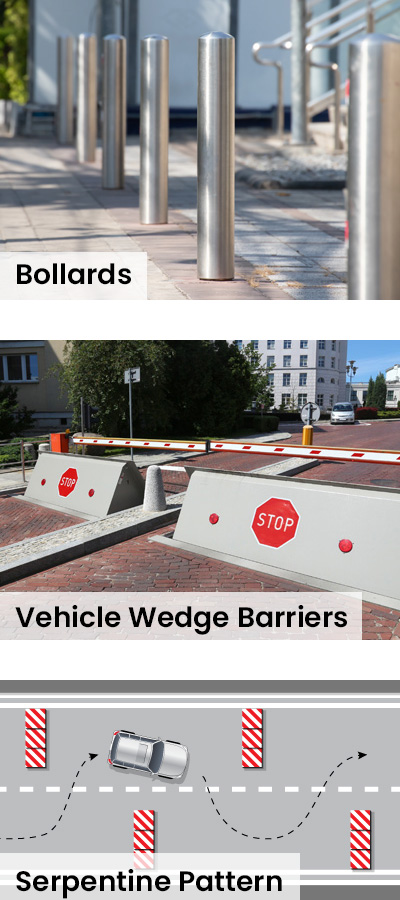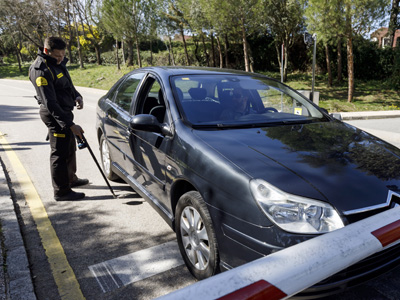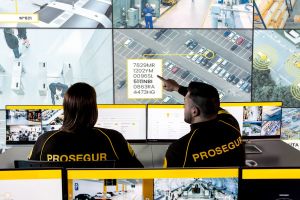Understanding and mitigating vehicular ramming attacks

Vehicular ramming attacks have tragically occurred twice within a twelve-day period: first at a Christmas market in Magdeburg, Germany, resulting in five fatalities and over 200 injuries; and then on New Year's Day in New Orleans, causing at least ten deaths and numerous injuries.
The attack in Germany appears to have been a classic "lone wolf" incident, which would have been difficult for security personnel to anticipate. The situation in New Orleans is currently under thorough investigation, and more information will emerge soon. These events underscore the very real risk of vehicular ramming attacks for both government and private organizations, highlighting the importance of having detection and mitigation strategies in place to address such threats.
A Not-So-Unlikely Scenario
For some security professionals, vehicular attacks might not seem like the most imminent threat. However, vehicle attacks on property and individuals are, in fact, quite common. The use of a vehicle to harm people is comparable to an active shooter scenario. Perpetrators may be motivated by ideology, mental instability, or simple greed. Terrorists and deranged individuals can execute an attack with minimal prior training and experience. Increasingly, thieves use cars to ram ATM machines or smash display windows at retail stores. While their takings might be small, the expense to the targeted organization is often substantial. Additionally, some individuals use vehicles to express their rage toward others.
Certain terrorist groups have specifically encouraged their followers to use vehicles to attack civilians, even providing detailed instructions on how to do so through social media and digital publications. Since 2006, at least Twenty large-scale terrorist attacks have occurred [1]. It's reasonable to expect more to follow. The bottom line is that incidents involving vehicles used to attack crowds, buildings, and targeted locations are likely to continue rising.
[1] CNN, Terrorist Attacks by Vehicle Fast Facts. https://www.cnn.com/2017/05/03/world/terrorist-attacks-by-vehicle-fast-facts/index.html
Vehicles as Weapons
The convenience and efficiency of using vehicles to mount attacks are evident. Cars and trucks are ubiquitous and easy to obtain. Anyone with the intent and means to compromise your security can buy, rent, steal, or carjack a vehicle—and then use it as a weapon against structures or pedestrians. According to FBI statistics, a vehicle is stolen every 46 seconds in the United States, with 25% of these being trucks. Terrorists often prefer trucks for their attacks because they are load-bearing, have a fast acceleration rate, metal outer frames, dual wheels, and slightly raised chassis.
Look for the Warning Signs
Terrorists and malicious actors often modify vehicles before carrying out an attack. They might reinforce the suspension for heavy loads or rough rides. Raised chassis can enable the vehicle to mount curbs and other barriers, while dual rear wheels make it easier to run over victims. Awareness of such modifications can help security professionals identify potential threats.
Pre-attack indicators may include:
- Mapping the route of the attack
- Conducting surveillance on the intended location
- Assessing vehicles for roadworthiness
Unusual behavior can also be a warning. For example, someone loitering or parking in a location for extended periods without a clear reason could signal bad intentions. Additionally, a perpetrator unfamiliar with operating a large vehicle they have recently rented or stolen might drive erratically, which is another red flag.
The Next Step

Realizing that vehicular attacks pose a significant risk in today’s world, security professionals must focus on developing and implementing strategies to mitigate the harm from such events.
Passive measures, such as erecting physical barriers, can stop potential threats or slow them down enough to enable other preventive actions. A proper threat assessment involves planning countermeasures that account for the size, weight, and speed of a potential attacking vehicle.
While fixed barriers are often the most effective deterrents, operable barriers offer the advantage of being easily movable.
Bollards are among the most common and effective fixed barriers, as they impede vehicle traffic while still allowing pedestrians to pass.
Vehicle wedge barriers can be installed at strategic locations on roadways and activated as needed to stop suspicious cars or trucks from passing.
The American Society for Testing and Materials (ASTM) assigns crash ratings to vehicle barriers to evaluate their effectiveness at stopping vehicles of various types and sizes. Understanding these crash ratings can help organizations select the products that best meet their needs, with ratings ranging from K4 to K12.
Barriers can be configured in various heights, lengths, and patterns to achieve optimal asset protection. One effective technique is arranging them in a serpentine pattern, which forces vehicles to navigate through them at relatively slow speeds. Speed is the enemy—preventing the attacker’s vehicle from gaining momentum reduces the potential for damage.
How to Maximize the Tools You Already Have
Physical barriers are most effective when paired with advanced surveillance systems. For instance, a serpentine barrier setup allows security personnel to observe and assess visitors before threats escalate.
Key considerations for using surveillance effectively:
- Camera Monitoring: Who watches the cameras? Are they trained to recognize threats?
- Access Control: How are entry points secured?
- Field of View: Are cameras positioned to monitor critical areas?
- Remote Monitoring: If in-house monitoring isn’t feasible, consider an external security firm for 24/7 coverage.
Video analytics software can enhance threat detection by analyzing multiple camera feeds simultaneously, often faster and more accurately than human observers.
Anticipating Trouble - and Neutralizing It

Physical measures are just one component of an effective mitigation strategy. Security teams must anticipate potential events and design procedures accordingly.
Key planning steps include:
- Coordination with Law Enforcement: Establish protocols for collaboration with first responders.
- Responder Access: Ensure that security barriers won’t impede emergency personnel.
- Threat Channeling: Design interdiction zones to contain and neutralize attackers, as vehicle attacks may precede knife or gun assaults.
Training is critical. Employees should be familiar with incident response protocols, including vehicle attack scenarios. Incorporate these topics into workplace violence and active shooter training sessions.
There are many resources available to help you in formulating violence mitigation plans. The FBI addresses these issues, as does the Association of Threat Assessment Professionals and ASIS International. And of course, your friendly global risk experts at Prosegur are always ready to help in whatever way we can.
Expertise You Can Trust

Robert Dodge is the Chief Executive Officer, Global Risk Services at Prosegur USA.
Robert is a recognized global security expert with over 25 years of experience in security, investigations and consulting. He has worked on security and investigative projects in more than 90 countries around the world.
Robert currently serves as CEO of Prosegur Global Risk Services, a key business unit of the world’s third largest security company, where he leads the team that advises some of the largest organizations around the world on risk mitigation.
Robert regularly speaks and writes on the matters of security and risk both domestically and internationally.
Stay updated with the latest security trends and analyses by following Prosegur's blog.
-
How Safe Buildings Attract and Retain Tenants
November 4, 2025
-
Three Signs Your Current Security Program May Not Be Future-Ready
October 21, 2025
-
Black Friday Shows Why Security Matters More Than Ever
September 11, 2025


